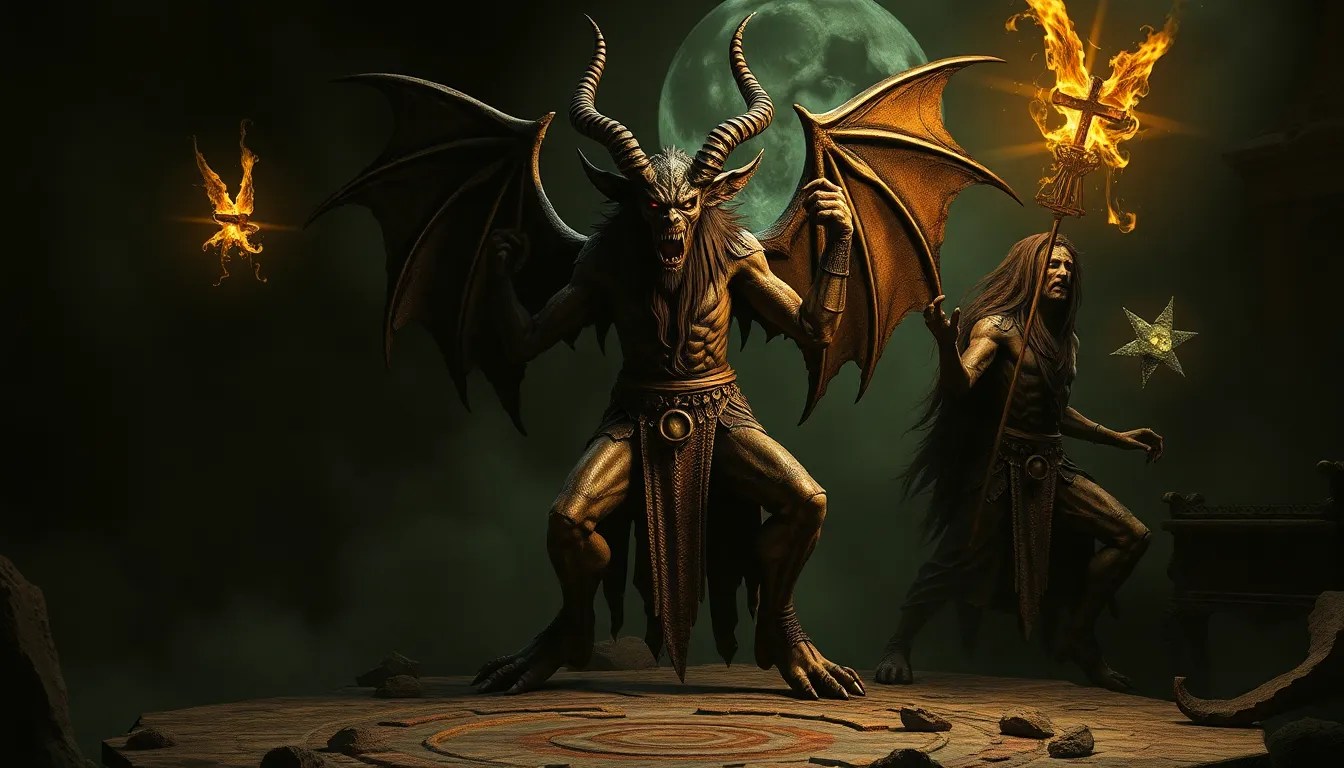The Influence of Babylonian Demonology on Witchcraft
I. Introduction
Babylonian demonology is a rich and complex facet of ancient Mesopotamian belief systems, characterized by a pantheon of deities, spirits, and demons that influenced daily life and spirituality. In various cultures, witchcraft has held significant cultural and spiritual weight, often interweaving with local beliefs and practices. This article aims to explore the intersection of Babylonian beliefs and witchcraft practices, shedding light on how ancient demonology has shaped contemporary witchcraft traditions.
II. Historical Context of Babylonian Demonology
The Babylonian civilization, flourishing from the 18th to the 6th centuries BCE, produced a vast array of texts and myths that detail their understanding of the supernatural.
A. The pantheon of Babylonian deities and demons
Babylonian religion was polytheistic, with a rich pantheon that included:
- Marduk: The chief deity, often associated with creation and order.
- Ishtar: The goddess of love and war, who had complex relationships with various demons.
- Lamastu: A malevolent demon known for harming mothers and infants.
B. Key texts and sources: Enuma Elish, Epic of Gilgamesh
Two of the most significant literary works from Babylonian culture are the Enuma Elish and the Epic of Gilgamesh. The Enuma Elish narrates the creation of the world and the rise of Marduk, highlighting the constant battle between order and chaos, symbolized through his conflicts with various demons. The Epic of Gilgamesh introduces themes of mortality, divine intervention, and the human condition, illustrating the interaction between humanity and the divine.
C. The role of demons in Babylonian society and spirituality
Demons were viewed as powerful entities that could influence human affairs. They were often invoked in rituals for protection or to seek assistance in times of trouble. Their presence was a constant reminder of the need for balance between the divine and human realms.
III. Core Concepts in Babylonian Demonology
A. Types of demons: benevolent vs. malevolent
In Babylonian demonology, demons were categorized into two main types:
- Benevolent demons: These were considered protectors and guides, often called upon for assistance and blessings.
- Malevolent demons: These were feared entities that could bring chaos or misfortune, requiring appeasement or exorcism.
B. Functions of demons: protectors, tricksters, and harbingers of chaos
Demons played various roles in Babylonian mythology:
- Protectors: Guardians who ensured safety and well-being.
- Tricksters: Entities that challenged norms and could lead to unforeseen consequences.
- Harbingers of chaos: Forces that disrupted the natural order, often requiring rituals to restore balance.
C. Rituals and incantations used to appease or banish demons
Rituals formed an essential part of Babylonian practices. Incantations and offerings were common methods used to appease demons or banish malevolent forces. These rituals often involved:
- Prayers and hymns dedicated to specific deities.
- Offerings of food, incense, or symbolic items.
- Exorcisms performed by priests to cleanse individuals or spaces of malevolent influences.
IV. The Evolution of Witchcraft in Ancient Mesopotamia
A. Early forms of witchcraft and magical practices
Witchcraft in ancient Mesopotamia encompassed a range of practices, from herbalism to divination. It was often intertwined with religion, as practitioners sought to harness the power of the gods and demons for various purposes.
B. The role of women and gender dynamics in witchcraft
Women played a significant role in the practice of witchcraft, often serving as healers, midwives, or practitioners of magic. Their societal status varied, as some were revered while others faced suspicion and persecution.
C. Interactions between Babylonian religion and local witchcraft traditions
The rich tapestry of Babylonian spirituality influenced local witchcraft traditions, leading to a blend of practices and beliefs that varied across the region.
V. The Transmission of Babylonian Demonology to Later Cultures
A. Influence on neighboring regions: Assyria, Persia, and beyond
Babylonian demonology had a profound impact on neighboring cultures, particularly Assyria and Persia, where similar beliefs and practices emerged.
B. The spread of Babylonian ideas through trade and conquest
As the Babylonian Empire expanded through trade and conquest, their demonological concepts spread, influencing the religious and magical practices of various cultures.
C. Adaptation of Babylonian demonology in Greco-Roman witchcraft
With the rise of Greco-Roman culture, many Babylonian demonological concepts were adapted and incorporated into their own belief systems, influencing the practices of witchcraft in that era.
VI. Key Themes in Witchcraft Influenced by Babylonian Beliefs
A. The concept of possession and exorcism
The belief in possession by demons and the need for exorcism became prominent themes in later witchcraft traditions, tracing their roots back to Babylonian practices.
B. Use of talismans and protective amulets
Talismans and amulets, believed to offer protection against malevolent forces, were common in Babylonian culture and have persisted in various forms in modern witchcraft.
C. The significance of herbalism and potion-making in witchcraft
Herbalism and the creation of potions were integral to Babylonian magical practices, providing a foundation for similar practices in later witchcraft traditions.
VII. Case Studies: Babylonian Demonology in Contemporary Witchcraft
A. Modern interpretations of ancient demonology
Contemporary witchcraft movements often draw inspiration from Babylonian demonology, reinterpreting ancient beliefs to fit modern spiritual practices.
B. Ritual practices influenced by Babylonian traditions
Many modern rituals incorporate elements of Babylonian practices, such as invoking specific deities or using ancient incantations.
C. The resurgence of interest in Babylonian mythology within modern witchcraft movements
A growing interest in ancient mythologies has led to the revival of Babylonian beliefs in contemporary witchcraft, as practitioners seek to reconnect with their spiritual roots.
VIII. Conclusion
In summary, Babylonian demonology has significantly influenced the development of witchcraft practices throughout history. The ongoing relevance of ancient beliefs in contemporary practices highlights the enduring nature of these mythologies. As interest in ancient cultures continues to rise, there is an invitation for further exploration and study of Babylonian mythology and its impact on modern witchcraft.



